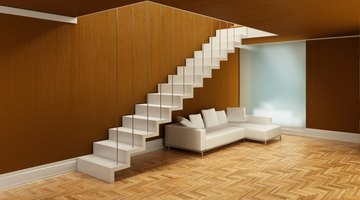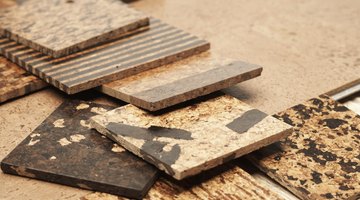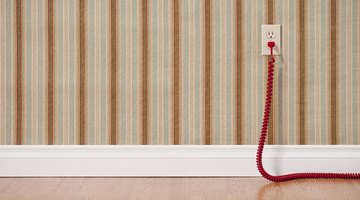The Best Baseboards for Basements
Baseboard, also called floor trim or base, offers drywall some protection from floor-level dents and dings, but the main purpose of baseboard is to conceal the gap between the edge of the flooring and the wall.

In a typical basement, moisture levels are higher than in rooms above-grade, so install construction materials that resist damage.
Vinyl

Flexible, glue-on vinyl baseboard, designed for installation with matching vinyl flooring, withstands exposure to moisture well, but some homeowners don’t care for the commercial look. Available in rolls or 4-foot strips, vinyl baseboard attaches to drywall or to masonry surfaces with vinyl cove adhesive. For the best results, install vinyl baseboard over masonry walls or moisture-resistant drywall.
Tile

Ceramic tile flooring and matching baseboard offer a quality look and are well suited for basement installation. Tile baseboard is more expensive than other decorative types of baseboard. Installation requires tile adhesive and grout to fill the joints between the tiles and between the baseboard and the ceramic flooring. If you have to remove tile baseboard, you may also have to replace the drywall which can come off with the tile.
Wood and Laminate

Wood baseboard, like solid wood flooring, isn’t advisable for basement installation. Real wood warps when it gets wet and the installation of solid wood products below-grade will often void the manufacturer’s warranty. Laminate baseboard will withstand higher humidity levels but not direct contact with standing water, which can make the product swell. Laminate baseboard installs with finish nails, inserted through the baseboard and into the wall studs behind the drywall.
Baseboard Water Guard

Metal or vinyl baseboard water guard is different from other types of baseboard, because its purpose isn’t to add a finished look to the edge of the floor. This type of baseboard serves as a perimeter drainage system and diverts water from around the edge of the basement floor to a sump pump that collects and pumps the water out of the basement.
The Drip Cap
- Baseboard, also called floor trim or base, offers drywall some protection from floor-level dents and dings, but the main purpose of baseboard is to conceal the gap between the edge of the flooring and the wall.
- In a typical basement, moisture levels are higher than in rooms above-grade, so install construction materials that resist damage.
- Tile baseboard is more expensive than other decorative types of baseboard.
- Metal or vinyl baseboard water guard is different from other types of baseboard, because its purpose isn’t to add a finished look to the edge of the floor.
References
Writer Bio
Glenda Taylor is a contractor and a full-time writer specializing in construction writing. She also enjoys writing business and finance, food and drink and pet-related articles. Her education includes marketing and a bachelor's degree in journalism from the University of Kansas.
Photo Credits
- Maciej Niemczyk/iStock/Getty Images
- Maciej Niemczyk/iStock/Getty Images
- Spiderstock/iStock/Getty Images
- Thomas Northcut/Photodisc/Getty Images
- Spiderstock/iStock/Getty Images
- IT Stock Free/Polka Dot/Getty Images
More Articles



